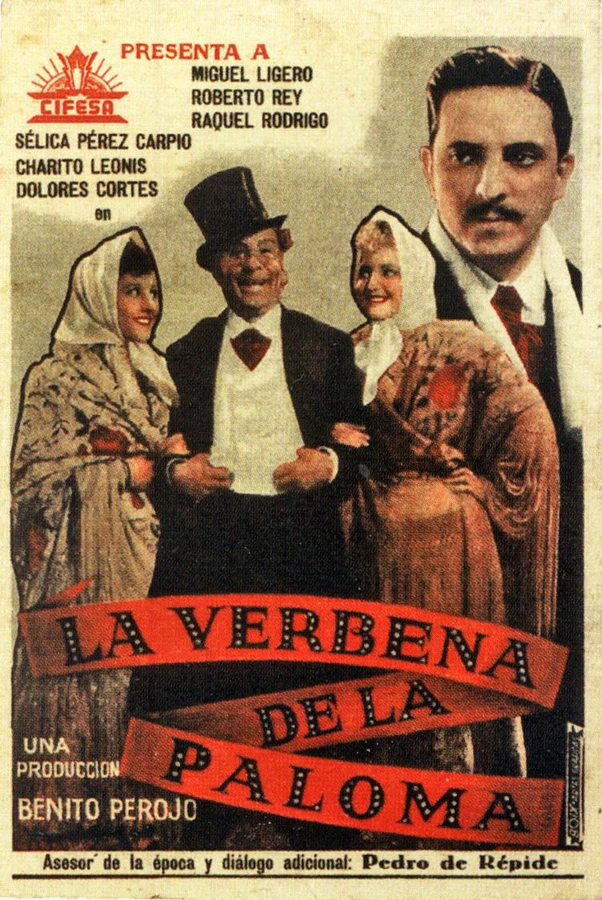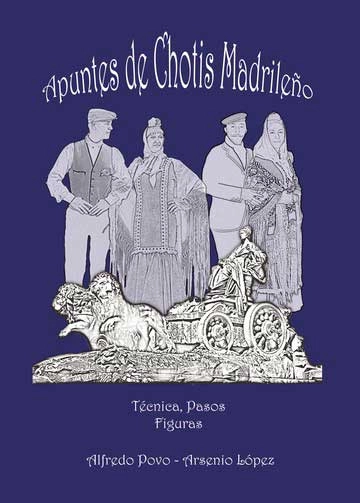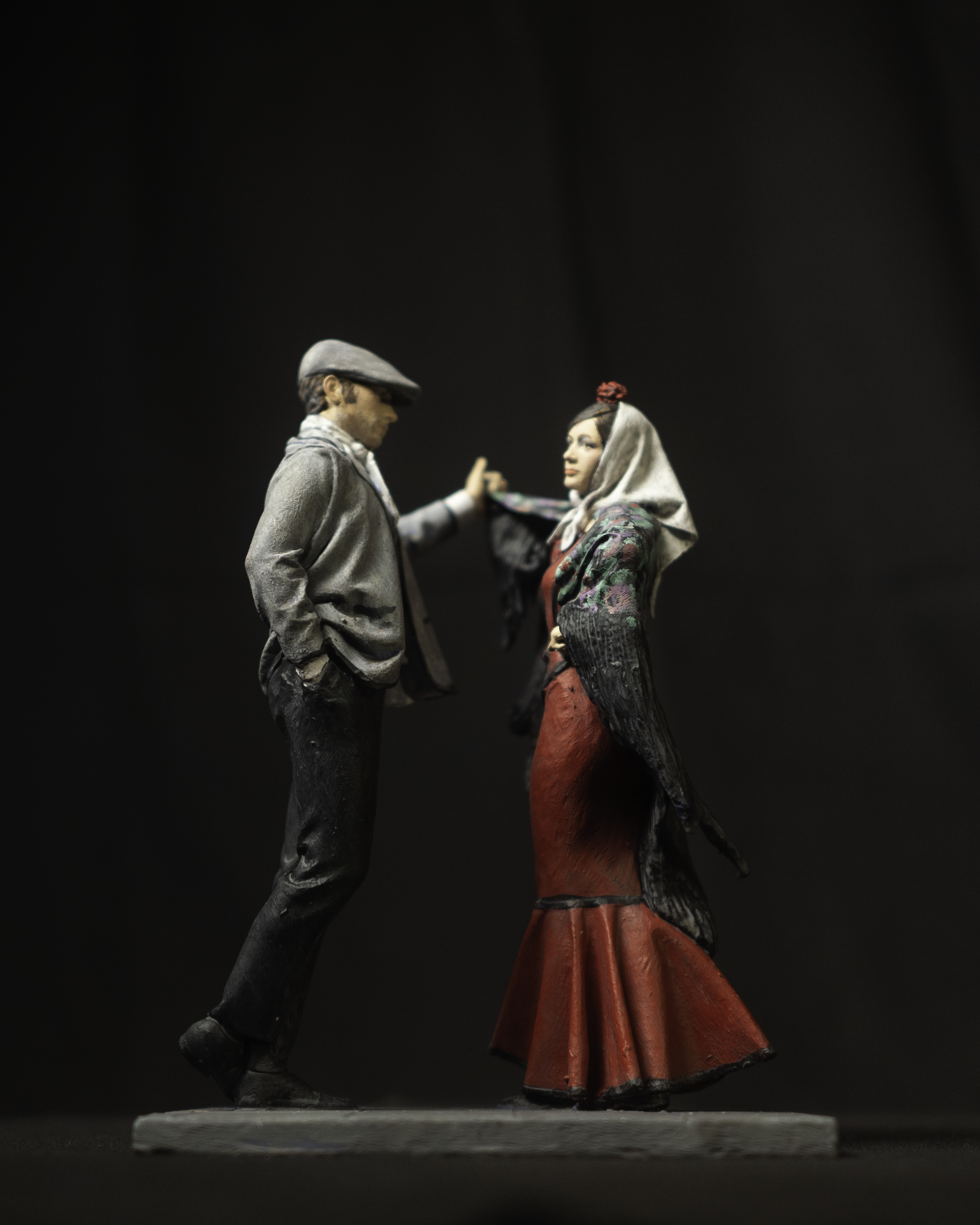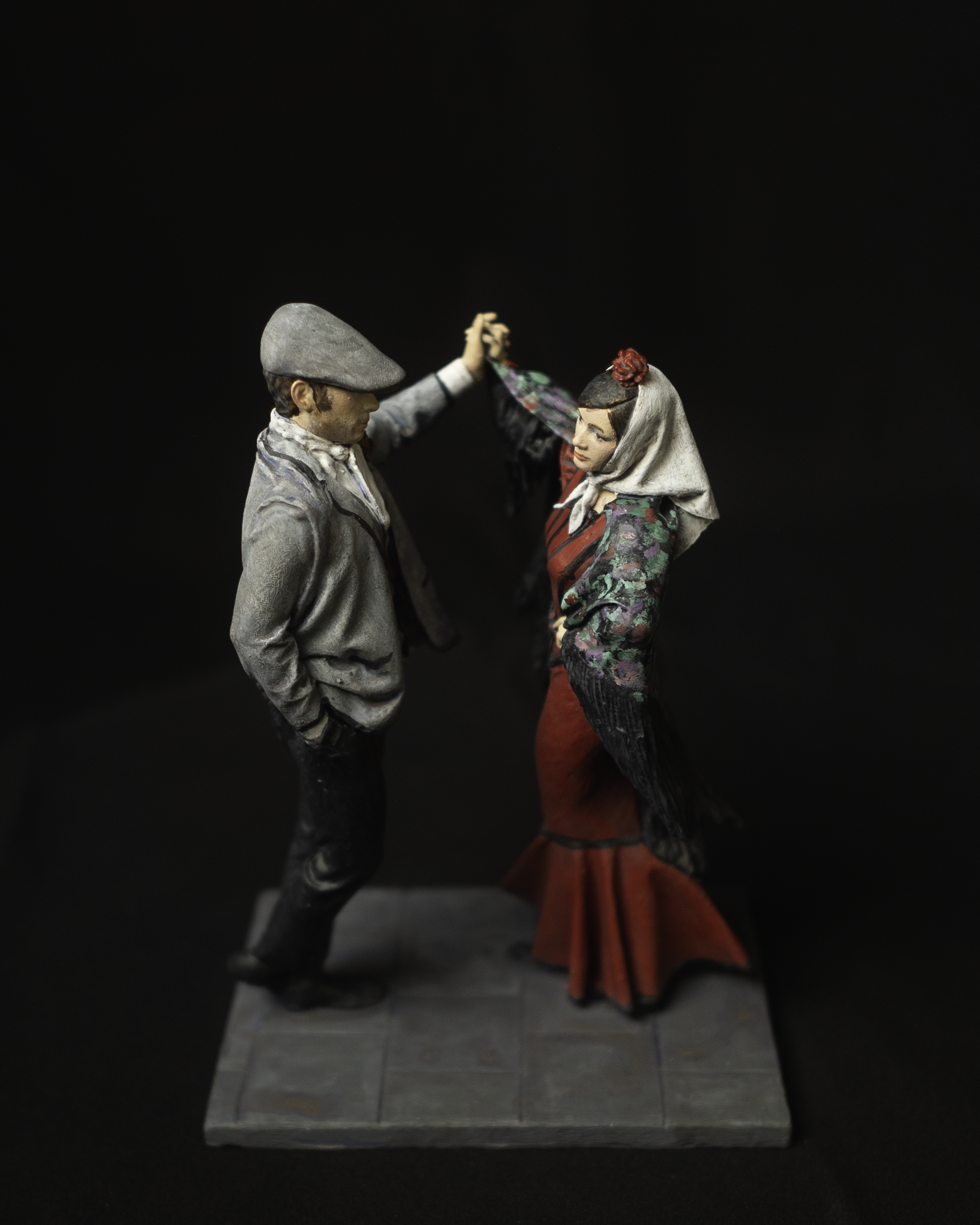The Chotis
The Chotis Dance: Celebrating the Miracle on the Streets of Madrid
On December 25th, the sun softly illuminates the streets of Madrid, still echoing with the miracle that took place the night before under the Arch of Calle de la Sal. The neighbors, moved by the birth of the child, have gathered once again to celebrate the new life that has brought hope to the community. Laughter and cheerful murmurs resonate among the cobblestones as the city continues to awaken to the Christmas spirit.
In the midst of this festive atmosphere, a familiar sound begins to fill the air: the joyful notes of a barrel organ. The organ grinder, a humble-looking man with a checkered cap and a worn-out black coat, appears, guiding his organ mounted on a cart pulled by a donkey. With a steady hand on the crank, he turns the instrument, and the melody that flows out wraps around the crowd like a warm embrace, sparking joy in the hearts of those gathering at the portal.

Upon hearing the music, Clara and Miguel, a couple known in the neighborhood for their skill at dancing chotis, exchange a knowing glance. The organ has set the perfect rhythm for this celebration of the miracle, bringing the traditional Madrid dance to life.
Clara:
(Smiling as she listens to the music)—Miguel, it’s the organ! Now the day truly has its music.
Miguel:
(With a smile on his lips)—Let’s go, Clara. This chotis is our gift to celebrate what happened here.

Without hesitation, Clara adjusts her Manila shawl over her shoulders, and Miguel puts on his cap. To the beat of the melody that the organ grinder continues to play with dedication, they take their positions, ready to dance. The chotis begins slowly, with its graceful and controlled steps, as the neighbors gather around, forming a circle of admiration.
The organ grinder, from his spot, watches with satisfaction as the couple lets themselves be carried by the music he has created. For him, it’s not just a melody; it’s his contribution to shared joy. The music of the barrel organ, so rooted in the city's traditions, seems to come alive in this moment, elevating it to something magical. Clara and Miguel's steps are not just a performance; they are a living celebration of the miracle the community has witnessed.
Clara twirls gracefully around Miguel, who stands firm in place, moving only slightly, as the chotis dictates. The neighbors applaud, some even tapping their feet to the rhythm, but everyone understands that this moment is more than just a dance. It is a tribute to the birth that has brought them together under the arch, an homage to life, hope, and tradition.

A neighbor, Don Hilarión:
(Enthusiastically)—It’s as if all of Madrid were dancing to your organ, my friend!
Organ grinder:
(Smiling humbly as he turns the crank)—It’s an honor to make music for something so special.
When the music finally comes to an end, Clara and Miguel bow elegantly to the applause of the crowd. The organ grinder, pleased with his contribution, takes a moment to nod, grateful for the chance to be part of this celebration. The whole community has come together in that small space, and even though the dance has ended, the spirit of Madrid, with its traditions and solidarity, continues to shine brightly.

The Meaning of the Chotis at the Nativity Scene
The chotis dance on the streets of Madrid, right after the miracle of the birth, is not just a celebration but a metaphor for life itself. Just like the steps of the chotis, which seem simple and restrained but are filled with emotional depth, the miracle of Christmas is humble in appearance but powerful in its meaning.
In this fictional story, the Madrid community represents humanity at its purest: united by hope and solidarity. The birth of a child in a simple portal, accompanied by neighbors who come to celebrate with their traditions, is a reminder that Christmas is not only the birth of Jesus but also the rebirth of the values that unite us. Like the parable of the birth in Bethlehem, it is in the simplest, most humble moments that we find true greatness.
Clara and Miguel, with their chotis dance, not only represent a couple celebrating life but also the spirit of a city that knows how to transform the ordinary into the extraordinary. Their dance at the portal is not just an expression of joy but also of gratitude for the miracle they have witnessed and for the chance to be together as a community. The chotis, with its steady rhythm and deep connection between dancers, symbolizes the union that gives meaning to Christmas: love, mutual respect, and the ability to share our lives with others, in good times and bad.
This story reminds us that, as in the portal of Bethlehem, the most important thing is not the place or the luxuries but the presence of love and solidarity. In the heart of Madrid, and in the heart of any community, the true miracle of Christmas is that, year after year, we find reasons to celebrate together, to dance, and to welcome with gratitude what life offers us.
Limited Edition:
#/24
- This figure is made exclusively to order; I don’t keep stock.
- Each piece is personally crafted as an original work of art, so delivery times may vary due to different factors. Once you place your order, I’ll provide you with an exact delivery date.
- Every piece is one-of-a-kind: signed, numbered, and comes with a Certificate of Authenticity. It also includes Intellectual Property registration to guarantee its value and originality.
Reproduced with the highest quality UV resin. Then, each figure is carefully hand-painted by myself.
Rembrandt acrylic paint is a high-quality artist's paint that meets the strict requirements of today's artists.
This acrylic paint is made with a high concentration of premium pigments that offer the highest degrees of lightfastness. Over 100 years of lightfastness under museum conditions.
Lightfastness has been tested according to ASTM D4303 standard.
Complete Acquisition Value - All Inclusive
All-Inclusive
- ✔ VAT
- ✔ Packaging with wooden box.
- ✔ Shipping.
- ✔ Transport Insurance.
| Height Scale | Scale 1/X | Value |
|---|---|---|
| 11 | 1/16 | 240€ |
| 18 | 1/10 | 480€ |
If you're interested in another size or a figure made of terracotta or bronze, please contact me for more information. Also, if you have any questions about the creative process, I'm happy to share more details.
Warning! The values of the figures on the website are subject to change without notice due to their exclusivity and demand.
Order the figure of:
“The Chotis
”
Please note that this website is not an online store or a traditional art gallery. My collection of Madrid-style, castizo/Galdósian figures will be sold exclusively at the historic shop 'El Ángel,' which has over 150 years of experience in Sacred Art. To purchase one of these pieces, you can visit the 'El Ángel' shop in person or contact them through WhatsApp or their website. I'm also available if you have any questions and would be happy to help you learn more about the figures and how they're created.
C. de Esparteros, 3, Centro, 28012 Madrid
We invite you to visit the 'El Ángel' store to discover in person the exclusive collection of Madrilenian, traditional, and Galdosian-style figures. You’ll be able to appreciate each artistic detail up close and take home a unique piece full of history. Don’t miss the chance to see them in person!






